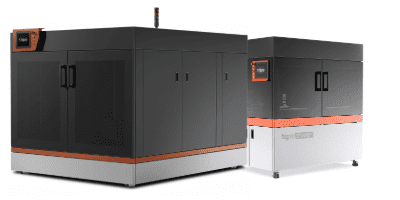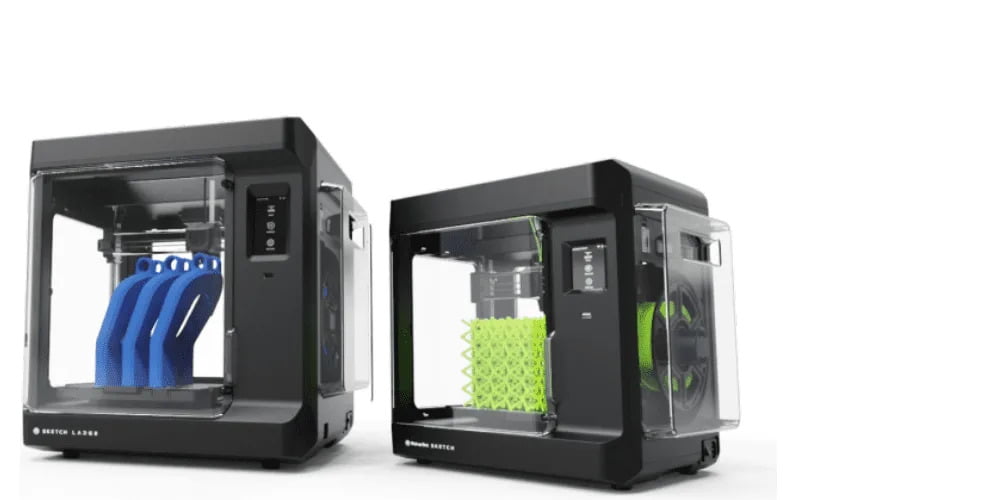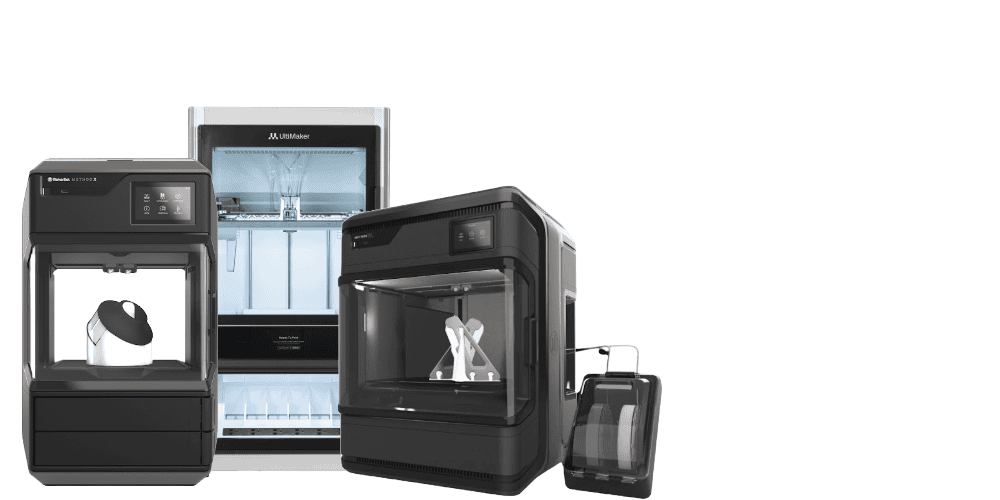
ASIGA DentaTRY
$105.00 $175.00
Biocompatible material for Try-In Dentures.
The production of a Try-In Denture is the first step in verifying that your digital denture design has an optimised fit and desired aesthetic for your patient. Reduce patient visits and obtain patient approval prior to manufacturing a full denture.
Asiga DentaTRY is available in a range of Vita Colour shades including A1, A2, A3, B1, B2, B3. Asiga DentaTRY is easy to carve, adjust, and add wax to make the required adjustments in the Try-In phase. This will help guide further design steps for producing the perfect final prosthetic.
*IN STOCK SHIPS NEXT DAY*
color
Size
Choose Quantity
Product Details
- Use for Try-In Dentures
- Certified Class I
- Colour: Vita Shades A1, A2, A3, B1, B2, and B3
- Printer compatibility: 385nm 3D printers.
- Manufactured by Asiga under ISO 13485:2016 & EN ISO 13485:2016
Intended Use:
Asiga DentaTRY is intended exclusively for professional dental work. Asiga DentaTRY is a 3D print resin intended for the manufacturing of 3D printed denture try-in models. Asiga DentaTRY is not intended for long term use (longer than 30 days) within the oral cavity. The denture try-in models produced are suitable for dental indications including dentures try-ins, custom trays, study models, and thermoforming applications.
Asiga DentaTRY is intended exclusively for professional dental work. Asiga DentaTRY is a 3D print resin intended for the manufacturing of 3D printed denture try-in models. Asiga DentaTRY is not intended for long term use (longer than 30 days) within the oral cavity. The denture try-in models produced are suitable for dental indications including dentures try-ins, custom trays, study models, and thermoforming applications.
Description, Indications & Effects:
Asiga DentaTRY is intended to be used in combination with DLP based 3D printers (i.e. Asiga Max Series or Asiga Pro Series) that support Asiga resins. Printer and resin must be optimized with respect to each other in order to produce complete and precise printed parts. If the printer and resin are not optimized with respect to each other this may have an adverse effect on the accuracy and physical quality of printed parts. DLP based 3D printers and post-curing lightboxes make use of a light source to polymerize the Asiga resin. Therefore, operators are advised to wear UV protective glasses when operating a 3D printer and/or lightbox. Differences in colour nuance may occur due to: production in batches; inadequate shaking and mixing of the original packaging before use; inadequate stirring in the DentaTRY resin before use; insufficient post-curing.
Asiga DentaTRY is intended to be used in combination with DLP based 3D printers (i.e. Asiga Max Series or Asiga Pro Series) that support Asiga resins. Printer and resin must be optimized with respect to each other in order to produce complete and precise printed parts. If the printer and resin are not optimized with respect to each other this may have an adverse effect on the accuracy and physical quality of printed parts. DLP based 3D printers and post-curing lightboxes make use of a light source to polymerize the Asiga resin. Therefore, operators are advised to wear UV protective glasses when operating a 3D printer and/or lightbox. Differences in colour nuance may occur due to: production in batches; inadequate shaking and mixing of the original packaging before use; inadequate stirring in the DentaTRY resin before use; insufficient post-curing.
Contra-Indications:
Asiga DentaTRY should not be used for any other purpose than as a 3D print resin for the manufacturing of denture try-in models. Any deviation from this instruction for use may have an adverse effect on the chemical and physical quality of Asiga DentaTRY. In case of an allergic reaction, please contact a medical physician. Any serious incident that has occurred in relation to the device must be reported to the manufacturer and the competent authority of the Member State in which the user and/or patient is established.
Asiga DentaTRY should not be used for any other purpose than as a 3D print resin for the manufacturing of denture try-in models. Any deviation from this instruction for use may have an adverse effect on the chemical and physical quality of Asiga DentaTRY. In case of an allergic reaction, please contact a medical physician. Any serious incident that has occurred in relation to the device must be reported to the manufacturer and the competent authority of the Member State in which the user and/or patient is established.
Processing & Post-Curing:
Ensure the 3D printer is clean prior to use, including the imaging area and any optical surfaces. Ensure the material tray is clear of solid debris prior to commencing a print. The presence of solid particles in the resin may cause deformation or failure of the printed objects. Nitrile gloves should be worn at all times when handling Asiga liquid resins up until the finishing step. Avoid contact with skin. If contact with skin occurs, wash thoroughly with cold soapy water. If contact with eyes occur, remove any contact lenses and flush with cold water and seek immediate medical assistance.
Ensure the 3D printer is clean prior to use, including the imaging area and any optical surfaces. Ensure the material tray is clear of solid debris prior to commencing a print. The presence of solid particles in the resin may cause deformation or failure of the printed objects. Nitrile gloves should be worn at all times when handling Asiga liquid resins up until the finishing step. Avoid contact with skin. If contact with skin occurs, wash thoroughly with cold soapy water. If contact with eyes occur, remove any contact lenses and flush with cold water and seek immediate medical assistance.
Mixing Before Use:
In Bottle: Agitate/shake bottle vigorously prior to pouring for at least one minute.
In Material Tray: Stir material with a soft spatula. Take care not to damage the film of the Material Tray. This step is necessary to re-disperse the (possible) pigment sediment from the bottom of the vessel. Color deviation and print failures may occur if insufficiently mixed
In Bottle: Agitate/shake bottle vigorously prior to pouring for at least one minute.
In Material Tray: Stir material with a soft spatula. Take care not to damage the film of the Material Tray. This step is necessary to re-disperse the (possible) pigment sediment from the bottom of the vessel. Color deviation and print failures may occur if insufficiently mixed
Fill Material Tray:
Make sure the temperature of the resin is between 15 and 30°C / 59 and 86°F and prevent exposure to (sun)light. Pour the resin in the material tray of the 3D printer.
Make sure the temperature of the resin is between 15 and 30°C / 59 and 86°F and prevent exposure to (sun)light. Pour the resin in the material tray of the 3D printer.
Washing:
Wash parts in IPA 98%+ pure (Isopropyl alcohol) in a well ventilated area. Best results are achieved when using a pre and post wash.
1. Using an ultrasonic cleaning device:
- Pre-wash bath: 10 minutes.
- Post-wash bath: 5 minutes.
Important: Ensure a dedicated bath is used for this material. Do not wash in baths that have previously been used for other materials. The prewash bath may be isopropanol solution that has already been used for several wash cycles of the same resin. The post-wash bath should be relatively pure. Expended post-wash bath solution can be used as pre-wash bath solution. Allow parts to dry thoroughly before post-curing
Post-Curing:
1. After washing and drying, let the printed parts rest for at least 30 minutes to ensure the printed parts are free of alcohol residue.
2. Place the printed parts in a UV curing unit “NK Optik Otoflash G171” for 2000 flashes.
3. Turn parts over and allow to cool for 5 minutes then repeat to make a total of 4 times. Total: 8000 flashes (4 x 2000 flashes).
1. After washing and drying, let the printed parts rest for at least 30 minutes to ensure the printed parts are free of alcohol residue.
2. Place the printed parts in a UV curing unit “NK Optik Otoflash G171” for 2000 flashes.
3. Turn parts over and allow to cool for 5 minutes then repeat to make a total of 4 times. Total: 8000 flashes (4 x 2000 flashes).
Post-curing is an UV-light treatment to ensure that DentaTRY printed parts obtain optimal polymer conversion. Through this the residual monomer is reduced to a minimum and the required mechanical properties are obtained. We advise use of the NK Optik Otoflash G171 postcuring box. Place parts inside the G171 Otoflash chamber on the support mesh, do not use a plastic tray inside the chamber. Inert gas is not required. Please see NK Optik Otoflash G171 user guide.
Soaking:
After post-curing, soak DentaTRY parts in fresh drinkable water for 60 minutes.
After post-curing, soak DentaTRY parts in fresh drinkable water for 60 minutes.
Storage Conditions, Expiry Date & Transport:
Store the resin in the original packaging at room temperature in a dry, cool and dark area. Close the packaging after each use. The expiry date of the product is mentioned on the product label along with the lot number. Store on printer for up to 4 weeks with hood closed or store in bottle for up to 24 months in a cool dark place. The product performance is no longer guaranteed once the expiry date is exceeded. Do not expose to UV-light. Standard transport conditions apply to this product. There are no restrictions for transport related to hazardous substances
Store the resin in the original packaging at room temperature in a dry, cool and dark area. Close the packaging after each use. The expiry date of the product is mentioned on the product label along with the lot number. Store on printer for up to 4 weeks with hood closed or store in bottle for up to 24 months in a cool dark place. The product performance is no longer guaranteed once the expiry date is exceeded. Do not expose to UV-light. Standard transport conditions apply to this product. There are no restrictions for transport related to hazardous substances
Waste Disposal:
Asiga resin in its polymerized form is not environmentally harmful thus can be disposed of in general waste. Asiga resin in its liquid state should be treated as chemical waste. Special disposal requirements are applicable, check with your local, federal, or other regulatory agencies for disposal requirements.
Asiga resin in its polymerized form is not environmentally harmful thus can be disposed of in general waste. Asiga resin in its liquid state should be treated as chemical waste. Special disposal requirements are applicable, check with your local, federal, or other regulatory agencies for disposal requirements.
Delivery Units:
Asiga DentaTRY is available in 1 color only: Clear, 1kg
Asiga DentaTRY is available in 1 color only: Clear, 1kg









